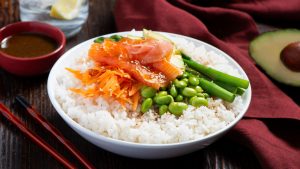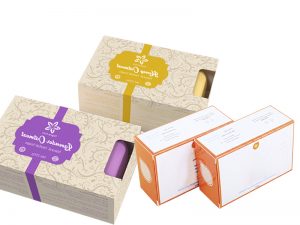What is Kobe Beef?
6 min read
Kobe beef is world-famous meat. It is Japanese meat, derived from the Wagyu bovine species of the Tajima genetic line and the Japanese Black bovine breed. Strictly supervised in order to preserve its reputation. Its meat is very tender. It melts in your mouth with a nutty flavor. The stars of the butcher’s shop such as Hugo Desnoyer fight over the work of their carcass!
Its “marbled” texture of fat, shimofuri, allows cooking without adding fat. But rest assured: they are “ good fats ” (monounsaturated fatty acids and omega 3) which ensure the proper functioning of the cardiovascular system.
Kobe beef and Wagyu beef: what’s the difference?
Wagyu Beef …
In the Japanese language, the words “wa” mean Japanese, and “gyu ” means beef. The wagyu is a bovine species of Japanese origin which includes 4 breeds, all pure: Japanese Polled, Japanese Shorthorn, Japanese Brown, and Japanese Black (or kuroge washu ). It is the latter from which the Kobe beef is produced.
Depending on the color of their coat, brown or black, several genetic lines characterize Wagyu beef. For example, for black Wagyu beef, there are 3 branches depending on their region of origin: Tottori or Kedaka, from Tottori, Tajiri or Tajima prefecture, from Hyōgo prefecture, and Fujiyoshi or Shimane, from Okayama prefecture.
And Kobe beef!
Thus, for a wagyu beef to hold the designation of origin “Kobe”, the animal must come from the Japanese Black breed; but also from the Tajima genetic line; and of course must be brought up in Hyogo Prefecture, whose main city is Kobe. Also, in France, if you taste Kobe beef at the table of a large restaurant, it is necessarily meat imported from Japan; It can not be otherwise.
The genetic branch Tajima is the land of origin of Kobe beef. He is originally from Hyogo Prefecture, a mountainous region facing the sea. Its open fields provide grass rich in minerals. The meat is thus endowed with unique qualities. This is why the breed is protected by pure lineage, thus ensuring perfect traceability.
On the other hand, Wagyu beef can be raised in other regions of the world, notably in Australia, since researchers and breeders have worked on genetics to rebuild herds of up to 93.5% of the original genetic heritage!
While Kobe beef is the ultimate holy grail of Wagyu meat, Japanese wagyu is also known for its haute couture quality. The Japanese Meat Grading Association (JMGA) has defined four quality criteria to classify Wagyu carcasses:
§ the marbled appearance ( shimofuri ) of the meat;
§ its luster and color;
§ its texture and consistency;
§ the shine, color and quality of its fat.
These four criteria are rated from 1 (poor) to 5 (excellent). Nevertheless, it is the shimofuri which is the optimal criterion and which makes it possible to differentiate several pieces of meat.
Kobe beef in history
In a Buddhist country, beef historically played an agricultural role and not food, and we relied on its capacity for endurance and muscle development. Used during the Edo era (1603-1868) as a beast of burden in agriculture, mining, and forestry, its meat was then reserved exclusively for the Emperor, his warriors (the shogun), and the great lords. (daimyo).
In 1868, the beginning of the Meiji era (1867-1912) marked the end of protectionism, the opening of Japan to foreign countries the abolition of the ban on consumption of red meat. If its consumption remains the privilege of the elite, it is gradually becoming accessible to the people, and in particular with the arrival of European merchants and other travelers from the West who participate in its integration into the culinary tradition of the Archipelago.
According to legend, an Englishman, having fallen in love with the flavor of the meat that he would have had the chance to taste, bought several oxen from the farmers of Kobe and started to sell steaks! Other foreigners, curious to taste this exceptional meat, would have favored its development. Thus, the legend was born …
However, it was not until 2012 that the export of Kobe beef outside the country was authorized by the Japanese government, in order to protect the domestic industry and its agricultural and culinary heritage. Exports start with the United States, then France in 2014.
Want a little anecdote? It is said that the parents of American basketball star Kobe Bryant gave him his first name after a visit to Japan where they could have tasted this meat. Nice tribute!
Kobe beef: strictly controlled breeding
The appellation “Kobe beef” is a strictly controlled appellation. Therefore, breeders must follow certain rules. Once the breeding is certified, the breeder benefits from the chrysanthemum stamp (the official symbol of the Emperor), with which he can stamp his meat.
Precise specifications
Several criteria are defined by the specifications:
§ the breeder must be part of the Kobé Association and breed his animals in accordance with
§ the beef must be of the Tajima genetic line, of the Wagyu Japanese Black (or kuroge Washu, black-robed Japanese) breed, and raised in the Hyogo region.
§ females must never have carried a calf and males must be castrated
§ cattle are slaughtered between 28 and 32 months, only by an accredited butcher. This is more than the minimum age for slaughtering an ox in France, around 24 months.
§ the diet is also controlled: the oxen are fed with rice straw and cereals such as corn, hops, soybeans and cornmeal porridge; they must drink pure water.
§ After the age of one year, the animals no longer graze, in order to limit their stress as much as possible, which makes their meat even fattier!
Massage, classical music and beer: a myth or a reality?
It is common knowledge that some breeders would use unique methods to ensure the best environment for their herds: beer feeding, regular massages, classical music playing in the barn … However, these breeding methods are more mythological. that of reality; nor would they directly improve the quality of the meat, its flavor or tenderness. Thus, the residues from brewing beer are sometimes used to arouse the appetite of cattle (most often in breeding bulls), and this practice was more common in the past. If sake massages are used occasionally, it is above all in order to keep the fur of cows clean and disinfected (with a view to their auction). In the past, when cattle were in the barn,
Finally, when it comes to listening to Mozart in the barn, there is no evidence that animals would react to a well-defined style of music …
What must above all be remembered and what is essential for the animal is the quality accorded to breeding, and the importance of a stress-free life!
A coveted conformation
Compliance with these strict specifications therefore allows Japanese breeders to obtain the appellation, or label, “Kobe beef” (which corresponds to our European PDOs). It must meet specific criteria both for the carcass (Carcass Yield) and for the quality of the meat (Meat Quality Score).
Carcass Yield judges the meat yield and conformation of the animal, on a scale from A1 to A5 (A1 corresponding to a lean animal with low yield and A5 corresponding to an animal with a high yield of meat per carcass) The Meat Quality Score takes into account 4 criteria: the color of the meat and that of the fat, its texture, and its luster. A classification system is then set on 5 levels (ranging from the poorest to the most exceptional), each subdivided into 12 degrees which characterize the BMS (Beef Marbling Scale) scale, 1 representing the lowest marbling density, and 12 the highest (the first four degrees being decatalogued).






